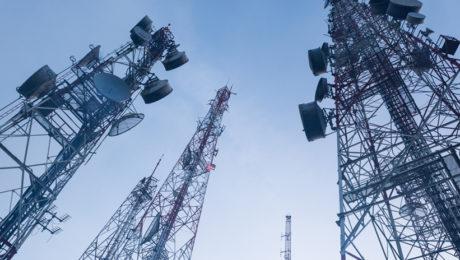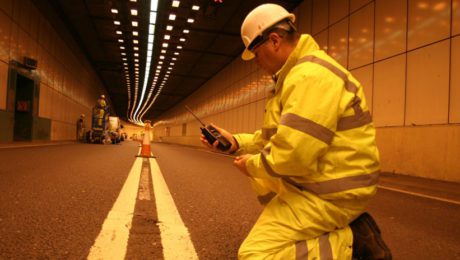Fully distributed IP architecture: Mission critical network infrastructure with Simoco Xd
Many new radio communication systems require a significant upfront investment, which means it may take several years to generate a return on investment. Simoco Xd does not require large amounts of physical infrastructure to be installed, rather, it scales up through IP. Expanding the network simply involves installing new base stations all connected via the IP infrastructure.
Simoco have gone further than anyone else in maximising DMR’s unique capabilities, developing a standards-compliant system built on a fully distributed architecture. Our Simoco Xd DMR solution is more scalable, flexible, resilient and cost-effective than alternative DMR offerings.
- Published in Professional Mobile Radio
Placing communications infrastructure at the heart of oil and gas production
With news that the USA is ‘forging ahead with a plans to boost oil and gas exports’, the country is set to become the world’s biggest oil producer this year.
The sudden jump in production has been largely driven by the process of hydraulic fracturing, or fracking, whereby pressured liquids are used to extract oil and gas from shale rocks.
- Published in Utilities
Weathering the storm: How to ensure your communications infrastructure can combat all conditions
Winter 2017/18 has seen some extremely challenging weather condition; from heavy snowfall cutting off Alpine ski resorts and generating avalanche warnings, to storm after storm battering both Europe and the US.
But what does this mean from a critical communications perspective?
- Published in Managed Services
What’s your emergency? Complications and delays with the Emergency Services Network (ESN)
The Emergency Services Network (ESN) is an ongoing project to create a truly next-generation communications system for the UK’s police, fire and rescue, and ambulance services. It’s going to be a unified, integrated Long-Term Evolution (LTE) network that can carry critical data applications and broadband services as well as voice communications, and will be more resilient, reliable and secure than the current, disparate networks. It will enable the three emergency services to communicate and collaborate with each other, ultimately working more effectively and saving more lives. In short, it is intended to carry the UK’s emergency services into the future.
- Published in LTE
Critical communications: what does 2018 hold?
January is a month for fresh starts, and looking to the year ahead. With this in mind what will the coming twelve months hold for the world of critical communications? Here are our key ideas…
- Published in Unified Communications
Showcasing critical comms at the Low Carbon Networks & Innovation (LCNI) Conference
Simoco Wireless Solutions took a trip to Telford recently for this year’s Low Carbon Networks & Innovation Conference (LCNI).
Aimed at organisations working in the energy sector, the conference looked at driving innovations and efficiencies that can power a low carbon future – one of today’s most important global priorities.
- Published in Events
Going underground
One of the UK’s biggest engineering projects marked a major milestone in October, as it was revealed that an Elizabeth line train has been hauled through the Crossrail tunnel for the very first time.
Crossrail is set to increase the rail capacity in central London by 10%, and is expected to carry around 200 million passengers a year when fully open. Its main feature is 13 miles of new twin tunnels, right through central London.
- Published in Transportation
A taste of the future: what Apple can teach us about LTE
Have you got an Apple Watch yet? The third iteration of the device was recently launched – and, as outlined here, it comes with one very distinctive new feature – LTE connectivity.
The jury is still out as to whether this is a game-changing development for the Apple Watch or just a nice-to-have, and regardless of how it ends up positioning Apple in the marketplace, it’s certainly had some technical difficulties to iron out.
- Published in LTE
Taking a Managed Service Approach to your Critical Communications Network
Your communications network sustains the flow of information in your organisation, and so how it is implemented and maintained is of critical importance to your business.
While the initial infrastructure and capabilities of a network are of primary concern and often dominate decision making, considering all phases of installation and management can help ensure a smooth operator and user experience and reduce the potential for future issues.
- Published in Managed Services
Why facility managers need digital mobile radio
‘Single site’ covers a lot of bases. Single site organisations can be as small as an individual shop or office – or as huge and complex as hospitals, universities and even festival sites and holiday parks. Clearly, such sites have very different communications challenges from their smaller cousins.
Thousands or even tens of thousands of people work across these large single site organisations. Some, of course, are unique to particular sectors, such as the health practitioners in hospitals, but a huge proportion operate in all industries, from cleaners and maintenance staff to security personnel. These staff make up facilities management – and for them, communications are critical.
- Published in Professional Mobile Radio









